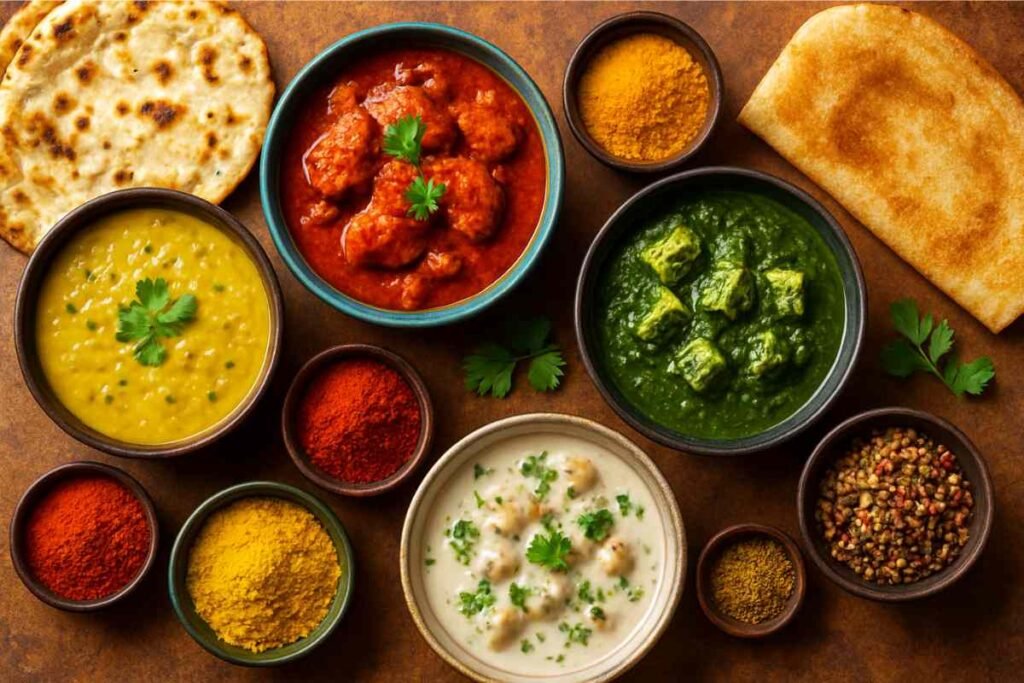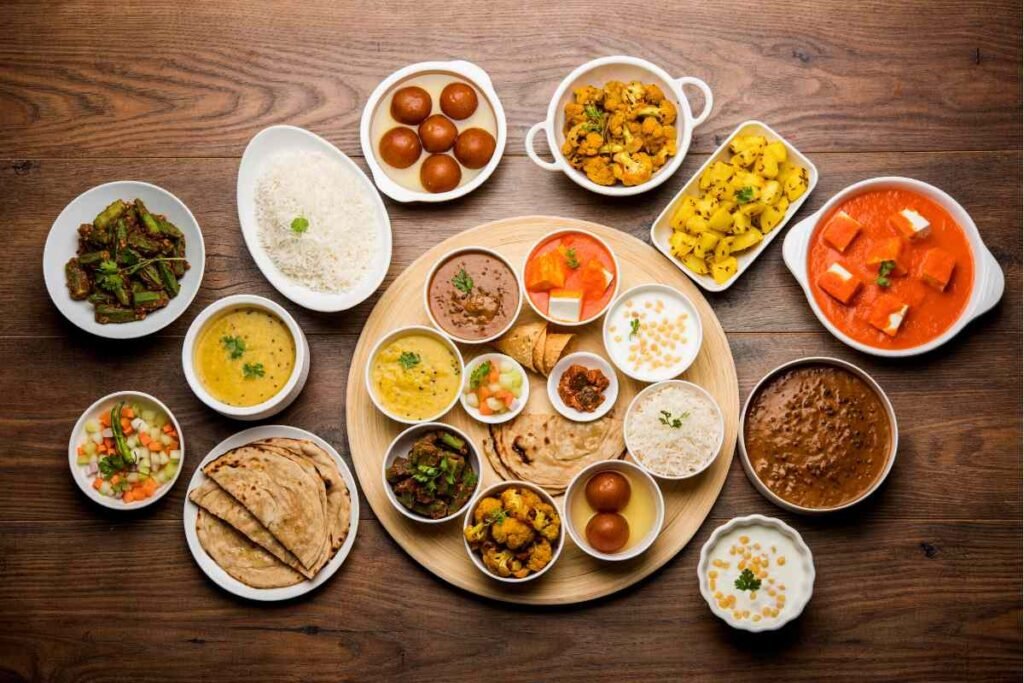Table of Contents
Think you know “Indian food”? Think again. Order a samosa in Delhi, and you’ll get a plump, potato-stuffed pyramid. Travel to Bengal, and your shingara might have a delicate, flaky crust with a sweet-and-spicy cauliflower filling. Head south, and you might not find one at all. This isn’t an anomaly; it’s the fundamental truth of Indian cuisine. Forget the monolithic, homogenised “curry” of global takeout menus. In India, the culinary landscape is a breathtakingly complex mosaic, a hyperlocal taste map where recipes, ingredients, and even the names of dishes can change dramatically every 50 miles.
This isn’t just regional variation; it’s an extreme, almost fractal, level of culinary diversity that resists easy categorization and defies global norms. While other large countries have regional foods, the sheer density and nuance of India’s culinary distinctions are unparalleled. So, what created this delicious chaos? Why does a simple dal taste completely different from one district to the next? Let’s embark on a gastronomic journey to understand the ’50-Mile Rule’ of Indian food.
The Ingredients of Diversity: A Recipe Centuries in the Making

The extreme specificity of Indian cuisine isn’t an accident. It’s a slow-cooked dish, simmered over centuries with a blend of geography, climate, history, and culture.
- Geography & Climate (The ‘Terroir’ of India): This is the most fundamental ingredient. What grows locally dictates what is cooked locally.
- Coastal Regions (Kerala, Bengal, Goa): Abundant coconuts, fresh fish, and rice form the backbone of the cuisine. The souring agent might be kokum in one area and tamarind in another.
- The Gangetic Plains (UP, Bihar): Wheat is king, leading to a rich tradition of breads (rotis, parathas). Lentils and seasonal vegetables are staples.
- The Arid West (Rajasthan, Gujarat): Water is scarce, so dishes are often cooked in milk or yogurt. Dried beans, lentils, and hardy grains like millet (bajra) and sorghum (jowar) dominate.
- The Mountainous North (Kashmir, Himachal): The climate calls for rich, warming foods. Mutton, yogurt, saffron, and aromatic spices like fennel and ginger are prominent.
- The Deccan Plateau (Maharashtra, Andhra): A mix of everything, with jowar, peanuts, fiery chillies, and tamarind playing key roles.
This “eat what you grow” philosophy created distinct culinary zones long before modern supply chains existed.
- The Spice of History (Invasions, Trade, and Migrations):
India has been a melting pot for millennia, and every group that came left its flavour profile in our national pot.- Mughal Influence: The Mughals brought rich, creamy gravies, aromatic biryanis, kebabs, and a lavish use of nuts, saffron, and rose water, profoundly shaping the cuisine of North India.
- Portuguese Palate: The Portuguese introduced potatoes, tomatoes, pineapples, and, most crucially, chillies to India. It’s hard to imagine Indian food without them, yet they are a relatively recent “foreign” import! They also left their mark on Goan cuisine with dishes like Vindaloo.
- British Banter: While less impactful on core flavours, the British left behind a legacy of club food, “cutlets”, baked dishes, and the culture of afternoon tea with snacks.
- Internal Migrations: Communities moving within India took their recipes with them, adapting them to local ingredients and creating unique fusion cuisines, like the food of the Saurashtrians in Madurai.
- Community & Caste (The Social Recipe Book):
Every community, caste, and religious group has its own specific culinary traditions, dietary laws, and ‘heirloom’ recipes.- A Brahmin family’s vegetarian sattvic cuisine (often avoiding onion and garlic) is vastly different from a Kayastha family’s elaborate meat dishes.
- A Chettinad feast in Tamil Nadu, known for its sun-dried spices and complex flavours, is a world away from a simple, yogurt-based meal in a Haryanvi village.
- Even within one city, the food cooked by a Jain family will have different rules and flavours than that of their Ismaili neighbours. These culinary identities are fiercely preserved and passed down through generations.
The 50-Mile Rule in Action: A Delicious Demonstration

Let’s take a simple dish and watch it transform:
- Fish Curry: In Bengal, it’s likely a light, mustard oil-based jhol with delicate spices. In Kerala, it’s a rich, creamy curry with coconut milk and tangy kudampuli (kokum). In Goa, it might be a fiery, vinegar-laced Ambot Tik. Same fish, entirely different universes of flavour.
- Dal: In the North, you get a rich, creamy Dal Makhani. In Gujarat, it’s a sweet, sour, and spicy tuvar dal. In the South, it’s the base for tangy sambar or a simple paruppu tempered with curry leaves and mustard seeds.
This isn’t just about changing one or two spices; it’s about a fundamental shift in the flavour profile, the cooking technique, and the cultural context of the dish.
Why Does This Hyper-Specificity Resist Homogenisation?
In an age of globalisation, where you can find a standardised McDonald’s burger anywhere, why does Indian food remain so fiercely local?
- “Ghar ka Khana” (Home Food) is Supreme: The gold standard for any Indian is always home-cooked food. Recipes are passed down orally from mothers and grandmothers, creating an unbreakable chain of culinary tradition. This makes people highly discerning and loyal to their specific, local flavour profiles. Your mom’s rajma is always the best rajma. Period.
- Pride in Culinary Identity: People take immense pride in their regional and community cuisine. It’s a core part of their identity. To suggest that a Hyderabadi biryani is the same as a Lucknowi biryani is to invite a passionate, well-reasoned, and possibly hour-long debate.
- Fresh, Local Sourcing: Traditional cooking still relies heavily on fresh, seasonal, and locally sourced ingredients and spices, which naturally reinforces regional variations.
- The Market is Too Diverse: A one-size-fits-all approach simply doesn’t work. Successful food businesses in India understand this and often tailor their menus to local palates.
A Delicious, Never-Ending Journey
To truly understand Indian food is to accept that you will never fully understand it. There is no single “authentic” Indian curry. There are thousands. The beauty lies in this very diversity, in the knowledge that a short train journey can transport you to a completely different culinary world.
It’s a living, breathing taste map that tells the story of our land, our history, and our people. It’s a testament to a culture that celebrates nuance and cherishes its local identities. So, the next time you travel in India, don’t just eat. Ask questions. Taste the local speciality. And appreciate the fact that you are experiencing a unique flavour that has been perfected over centuries, probably just for that 50-mile radius. It’s the most delicious journey of discovery you can ever take.